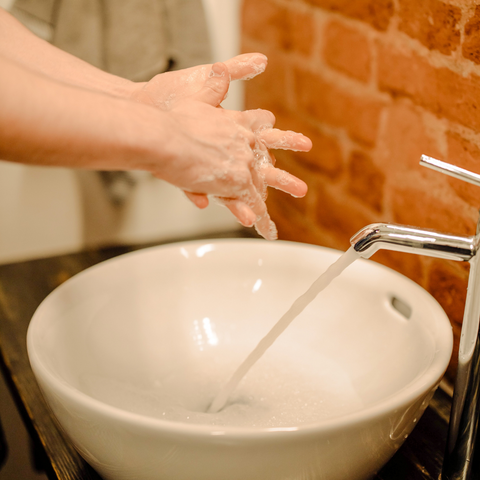What is Lye?

When reading soap labels, you might see lye or sodium hydroxide listed as one of the ingredients. It's THE crucial ingredient in soap making and it's what makes soap soap!
WHERE DOES IT COME FROM?
Chemically speaking, lye is sodium hydroxide. It comes from ash (from burning wood).
IS IT SAFE?
Lye is caustic. This means you need to be super careful when working with it. Always wear gloves, safety glasses, and a chemical mask. Lye can burn your skin if it gets on you, however, water is what activates it, so as long as you are being careful, you shouldn't have any issues. Vinegar neutralizes lye, so if you do happen to spill, you can clean the area with vinegar. We clean all of our equipment with vinegar. During the soap making process, lye is added to water NEVER in the opposite order unless you want to witness an explosion (it creates a dramatic exothermic reaction). After you properly mix the lye and water together, it has to sit for a while to heat up. This creates fumes that should not be inhaled, thus the need for the chemical mask! As long as you're practicing regular lab safety, everything will be fine!
BUT IS IT SAFE TO USE IN SOAP?
Yes! After the lye/water mixture heats up to the correct temperature, oils are added. A chemical reaction then occurs called saponification. After this reaction occurs, no lye or water remains in the soap! This is why on HK & Sons labels, you'll see the words "saponified coconut oil" and "saponified canola oil" instead of "sodium hydroxide." Saponified oil is technically what is IN your soap, not sodium hydroxide. The lye and water do not remain, they saponify and essentially create a new/different ingredient.